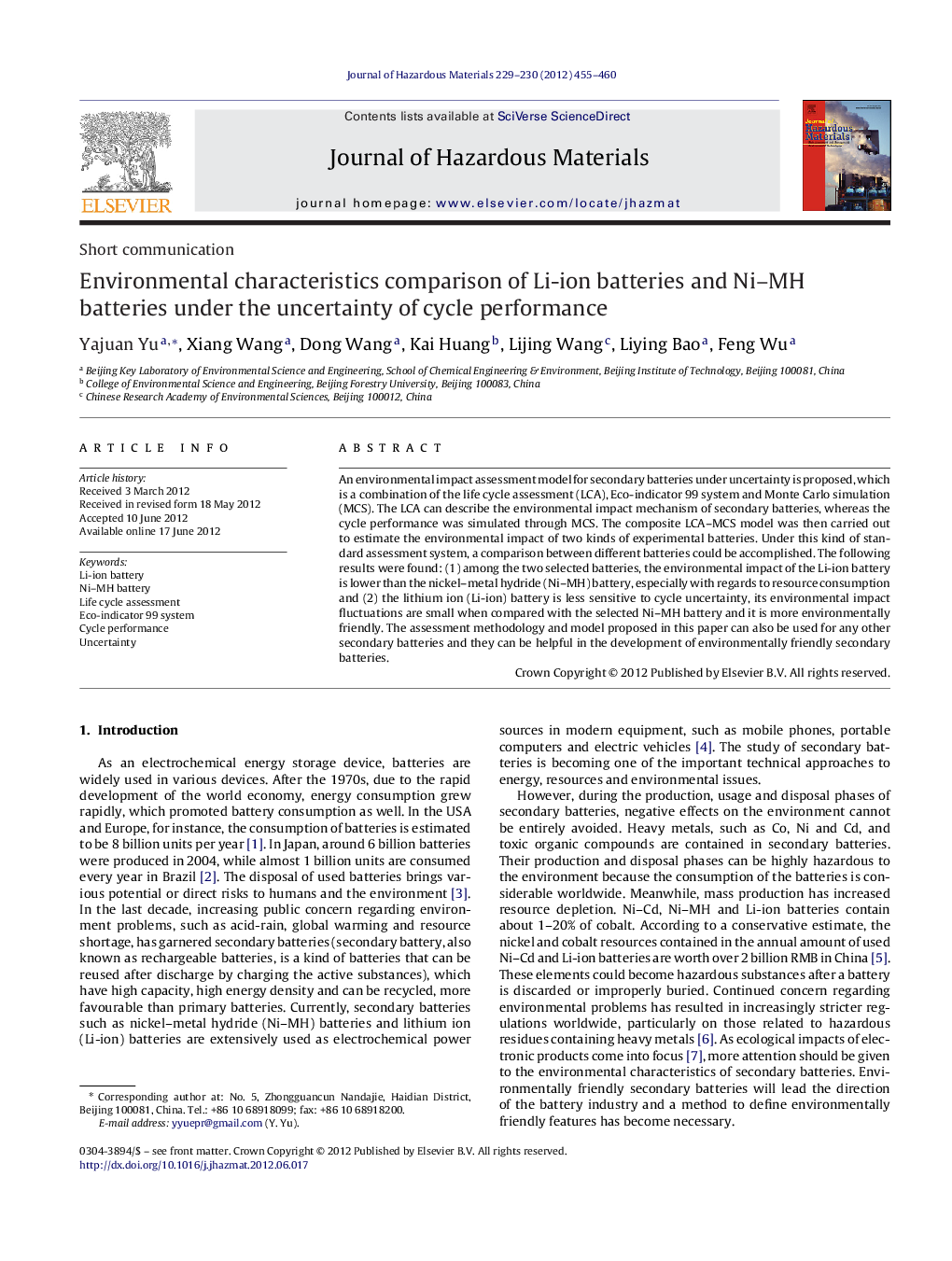| Article ID | Journal | Published Year | Pages | File Type |
|---|---|---|---|---|
| 577960 | Journal of Hazardous Materials | 2012 | 6 Pages |
Abstract
An environmental impact assessment model for secondary batteries under uncertainty is proposed, which is a combination of the life cycle assessment (LCA), Eco-indicator 99 system and Monte Carlo simulation (MCS). The LCA can describe the environmental impact mechanism of secondary batteries, whereas the cycle performance was simulated through MCS. The composite LCA-MCS model was then carried out to estimate the environmental impact of two kinds of experimental batteries. Under this kind of standard assessment system, a comparison between different batteries could be accomplished. The following results were found: (1) among the two selected batteries, the environmental impact of the Li-ion battery is lower than the nickel-metal hydride (Ni-MH) battery, especially with regards to resource consumption and (2) the lithium ion (Li-ion) battery is less sensitive to cycle uncertainty, its environmental impact fluctuations are small when compared with the selected Ni-MH battery and it is more environmentally friendly. The assessment methodology and model proposed in this paper can also be used for any other secondary batteries and they can be helpful in the development of environmentally friendly secondary batteries.
Related Topics
Physical Sciences and Engineering
Chemical Engineering
Chemical Health and Safety
Authors
Yajuan Yu, Xiang Wang, Dong Wang, Kai Huang, Lijing Wang, Liying Bao, Feng Wu,
